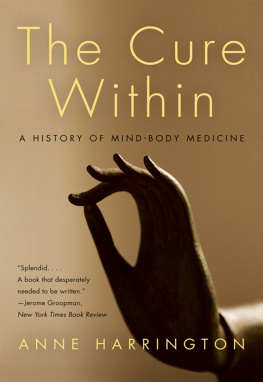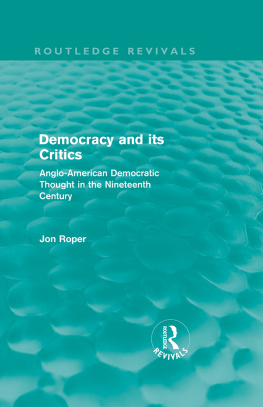MEDICINE, MIND, AND THE DOUBLE BRAIN
ANNE HARRINGTON
Medicine, Mind, and
the Double Brain
A Study in Nineteenth-Century Thought
PRINCETON UNIVERSITY PRESS
PRINCETON, NEW JERSEY
Copyright 1987 by Princeton University Press
Second Printing, with Addenda, 1989
Published by Princeton University Press, 41 William Street, Princeton, New Jersey 08540
In the United Kingdom: Princeton University Press, Guildford, Surrey
ALL RIGHTS RESERVED
Library of Congress Cataloging in Publication Data will be found on the last printed page of this book
ISBN 0-691-08465-3
ISBN 0-691-02422-7, pbk.
Publication of this book has been aided by a grant from the Whitney Darrow Fund of Princeton University Press
eISBN: 978-0-691-22817-4
R0
To my mother, the hand I can always reach for; the friend who sees and knows (all too well) the child in me, but is no less proud of the woman I have become and am becoming.
List of Figures and Tables
G UIDE TO THE M AJOR S TRUCTURES OF THE H UMAN B RAIN D ISCUSSED IN T HIS S TUDY
Acknowledgments
T HROUGHOUT THE research and composition of this study, I have been the recipient of great riches in the way of support, encouragement, and critical guidance, and I am very happy to have the chance finally to acknowledge some of the many people to whom I am indebted.
This book is a revised version of a 1985 Oxford D.Phil. thesis, Hemisphere Differences and Duality of Mind in Nineteenth Century Medical Science, c. 1860-1900. Charles Whitty, assigned to me as a neurological supervisor when I came to Oxford in the fall of 1982, helped to smooth some of the bumpier technical bits of my research, and served as an ever-patient, perceptive sounding board for my developing ideas. Early on, I also had the opportunity to be supervised by the psychiatrist G. E. Berrios, at Cambridge University, whose encyclopediac knowledge of the broad area in which I was working guided me to useful background material and generally helped me get my bearings. John Durant of the Oxford External Studies Department provided exemplary supervisionand no inconsiderable friendship during my third year, closely following the actual writing of the thesis, enriching my views with his own sensitivity to important historical links and signposts and invariably helping me to remember why I fell in love with the history of science in the first place. As I settled down to the task of revamping the thesis for publication, William Bynum at the London Wellcome Institute for the History of Medicine diligently read through all the revisions and made numerous perceptive suggestions. The final chapter of this study has especially benefited from his scrutiny.
I am grateful to Charles Webster and the rest of the staff at the Oxford Wellcome Unit for opening their doors to me in 1982, and then facilitating the progress of my research in all sorts of quiet, critical ways. I am also very indebted to the Marshall Aid Commemoration Commission, which made it possible for me to come to Oxford in the first place and then financed my research for three years. The final revision of the dissertation was made possible by a grant from the Wellcome Trust, which enabled me to spend a year as a post-doctoral fellow at the London Wellcome Institute for the History of Medicine. I am glad to have a chance to express my appreciation for the assistance, stimulation, and friendship of all the people there.
Julian Jaynes at Princeton University knows how much I owe to him for encouraging me to produce a preliminary summary of this work for the journal The Behavioral and Brain Sciences.The effect of that project on this book has been quite significant, both for what it taught me in its own right and for the range of interdisciplinary feedback it generated. Other people I would like to single out for special mention include the late Kenneth Dewhurst; John Forrester; Ruth Harris; the late Henry Hcaen; Georges Lanteri-Laura; Gert-Jan Lokhorst; John Marshall; Pierre Morel; Rodney Needham; Aaron Smith; Roger Smith; Peter Swales; Paul Weindling; and Oliver Zangwill.
I am grateful to my two readers from Princeton University Press: Francis Schiller, for his vote of confidence, and Lorraine Daston, for her perceptive suggestions on how I might improve the manuscript. I am most indebted to Rod Andrews for his beautiful diagrams and drawings. I also am pleased to express my thanks to Judith May, Science Editor at Princeton University Press, for her faith that all my labors would finally materialize into a proper book, for her skillful handling of all the practical aspects of this venture, and for her ready and friendly accessibility.















